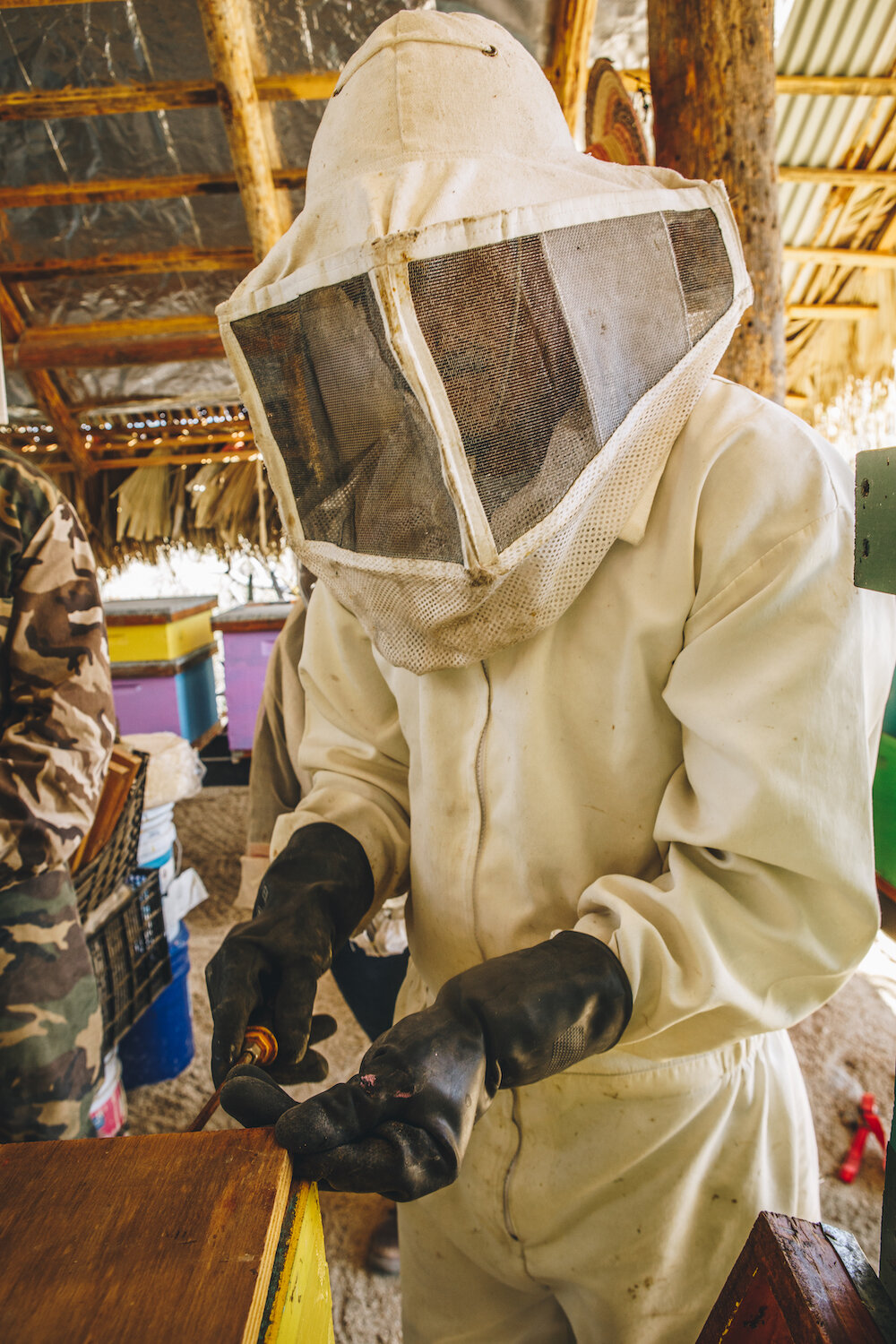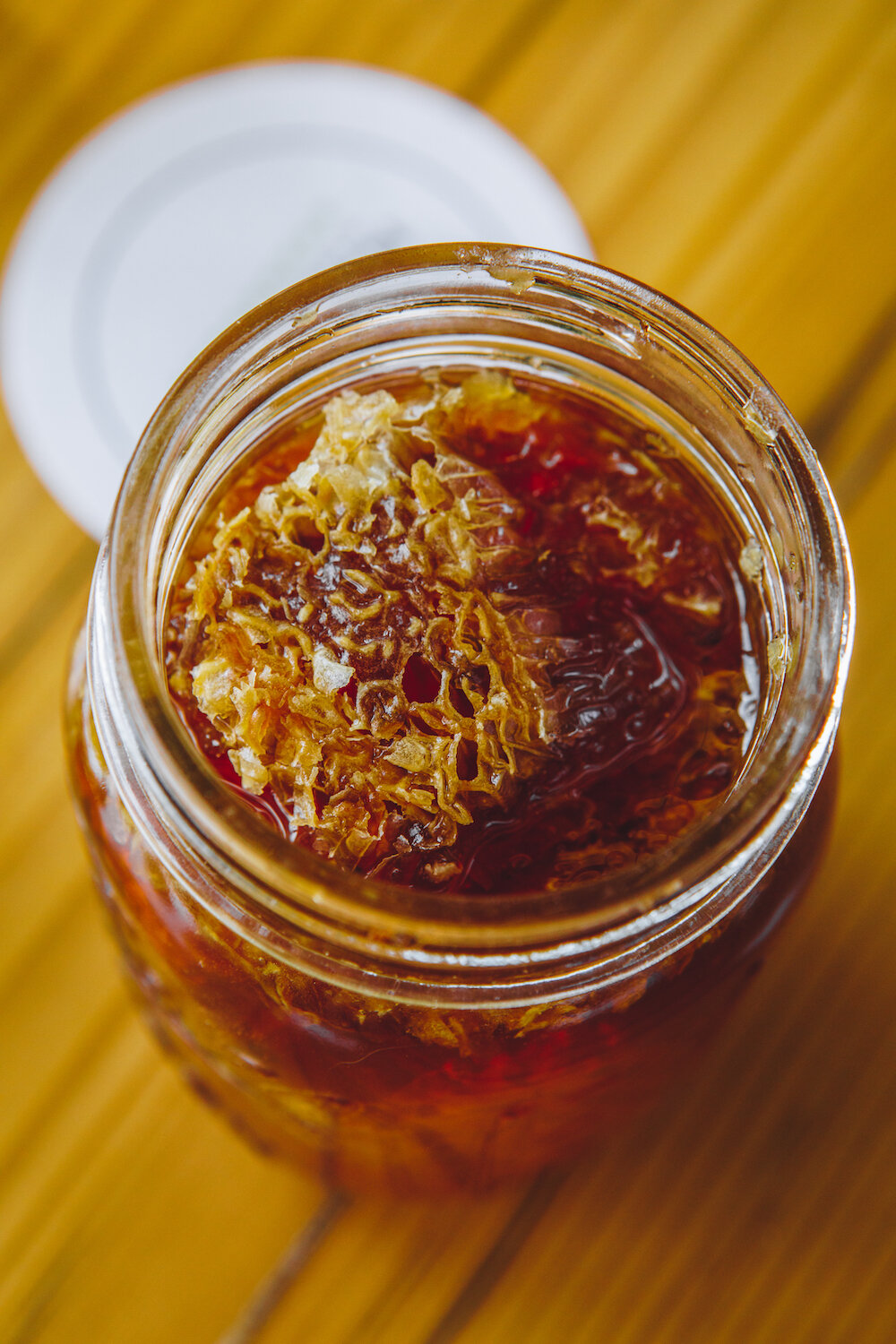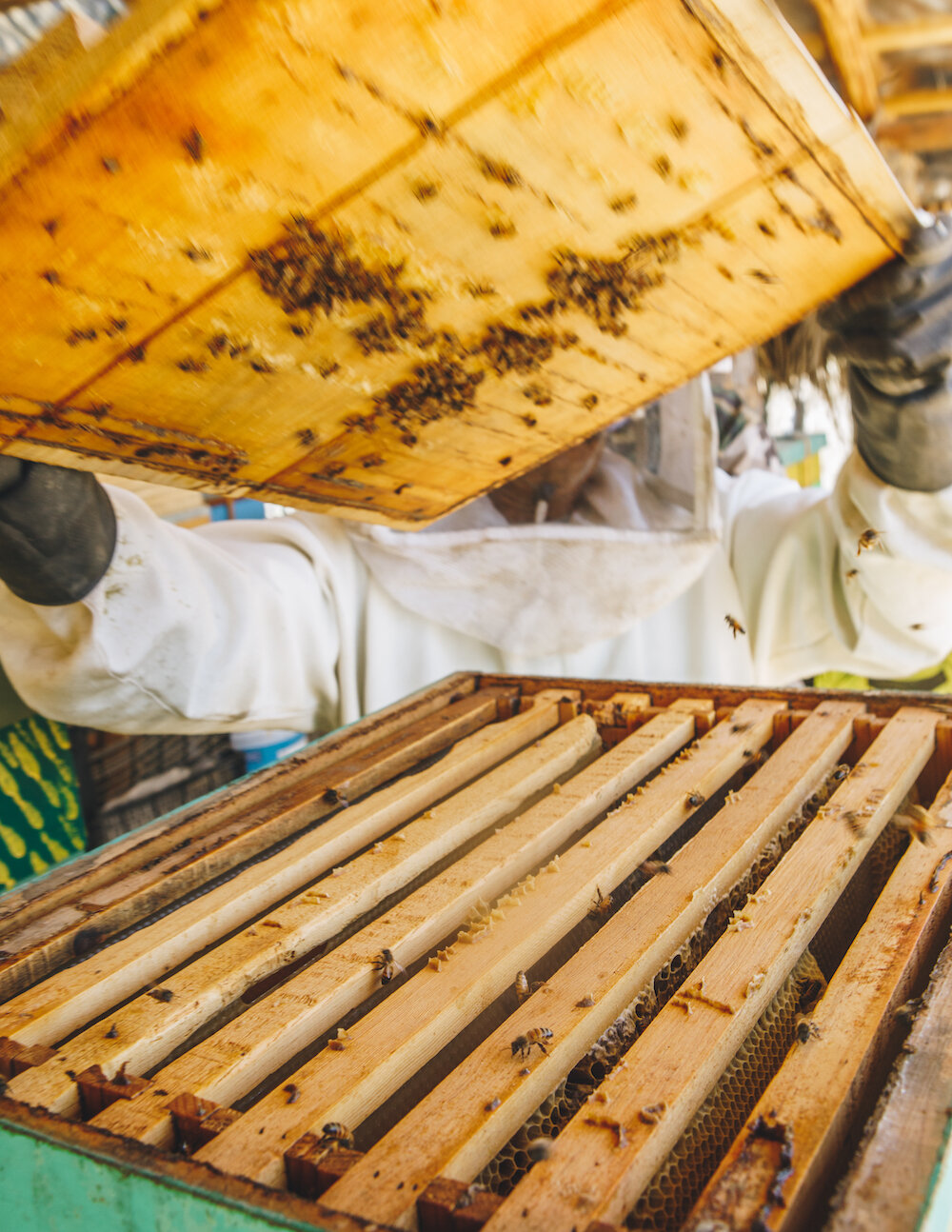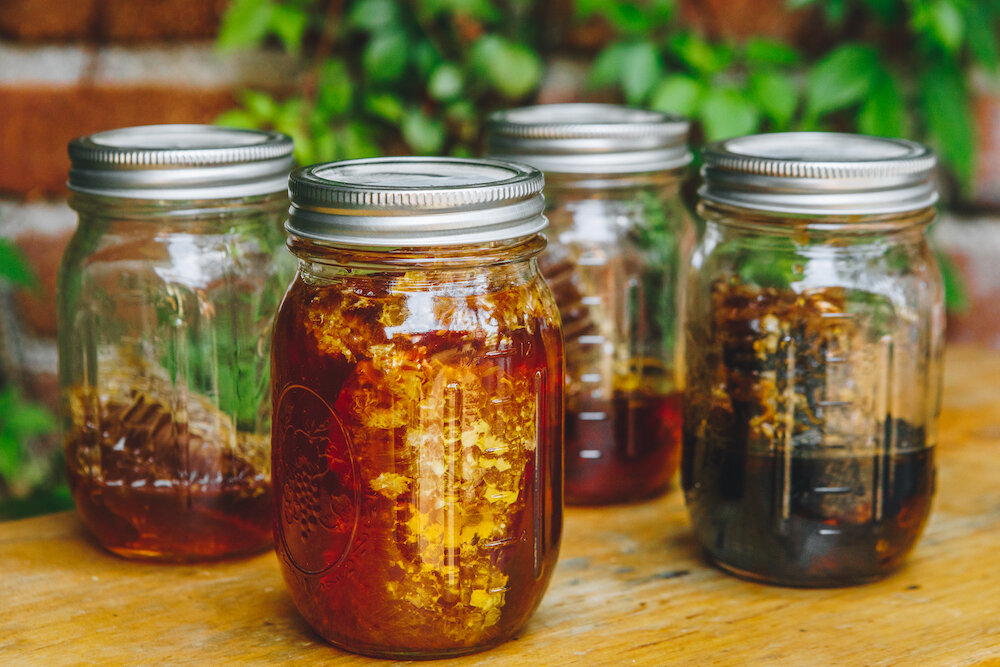“The hum of bees is the voice of the garden”, Elizabeth Lawrence
There’s always something going on at the farm.
Every new day brings fresh experiences, new ways to create, or the opportunity to explore a new project. Today, in honor of World Bee Day, we are so excited to tell you more about the Flora Farms Bee Rescue Project!
Bees are the life source of our natural ecosystem and sadly, they are in trouble. Their numbers are in real decline due to factors including disease, habitat loss and pesticidal impact. Bees are some of the most important creatures we share this planet with. In fact, these buzzing beauties are responsible for almost one out of every three bites of food we eat; hey are essential to maintaining the healthy harvests we have enjoyed for 10,000 years. Did you know that more than 4,000 species of plants survive thanks to bees?
We cannot live without bees, and we wanted to play our part in honoring them here at the farm. And so, we are thrilled to introduce The Bee Rescue Project at the farm. The mission of the project is to make our Apiary a safe place for bees to live and work their magic, making honey, propolis and beeswax. We provide rescue service for unwanted bees. While our Bee Project it’s still in its early stages, we’ve already learned so much, and wanted to share some of the things we are doing and how we are doing them, with you.
Some interesting facts about the farm’s Bee Rescue Project:
We have 25 hives (so far!)
Protección Civil or Bomberos call us (that is, our resident beekeeper Aguirre and resident Veterinarian, Angie, get the call!) to re-home unwanted hives found in houses or local areas. We go to the site, carefully remove the hive and bring it to Flora Farms. We have the ability to rescue beehives from Zacatitos all the way to Todos Santos)
We make our own housing boxes for the bees
Bees sees all colors except red. A colony recognizes its own box color and always returns to the same box; therefore, we have painted each box with its own unique color (excluding red). The bees leave their box first thing in the morning (sunrise) and come back home around 7pm.
The harvested honey is used at the farm for desserts, Fried Chicken Night, “Honey Bee” Drink, and Honey bitters!
We will start harvesting bee Propolis next winter (2021) – and we will use it to make Propolis bitters!
The bees have already transformed our harvests. Our farmers have remarked how much more robust our vegetables are becoming.
Facts about Busy Bees - and why Bees are SO important for the world!
Bees are essential to maintaining a healthy environment and economy. We rely on them and other insects to pollinate the majority of our fruit and vegetables.
They are considered incomparably useful insects, not only for their role as pollinators, but also for their ability to produce honey, wax and propolis.
Almost 90% of wild plants and 75% of leading global crops depend on animal pollination. Crops that are dependent on pollination are five times more valuable than those that do not.
Honeybees are impressive flyers. They fly at speeds of around 25km per hour and beat their wings 200 times per second!
Each bee has 170 odorant receptors, which means they have one serious sense of smell! They use this to communicate within the hive and to recognize different types of flowers when looking for food.
The average worker bee lives for just five to six weeks. During this time, she will produce around a twelfth of a teaspoon of honey.
The queen can live for up to five years. She is busiest in the summer months, when she can lay up to 2,500 eggs a day!
A beehive in summer can have as many as 50,000 to 80,000 bees.
A bee has to collect nectar from about 2 million flowers to make 1 pound of honey.
The production of one pound of honey requires the work of 556 worker bees.
Bees fly more than once around the world to gather a pound of honey.
The average worker bee makes about 1/12th of a teaspoon of honey in her lifetime.
Bees have 2 pairs of wings. The wings have tiny teeth so they can lock together when
the bee is flying.Beeswax is produced by the bees. Bees have special glands located on their stomach
that secrete the wax into little wax pockets. The bee chews the wax and shapes it to
make honeycomb.Propolis is a sticky substance that bees collect from tree buds. Bees use propolis to weatherproof their hive against drafts or rain. People have discovered anti-bacterial properties of propolis for use in the medical field. Royal
Jelly is a milky substance produced in a special gland in the worker bee’s head. Throughout her entire life, the Queen is fed Royal Jelly by the workers.
Honey comes in different colors and flavors, which is determined by the flower where
the nectar was gathered from.
We can all do our bit to support these brilliant bugs!
If you are in the Los Cabos area and you have an unwanted hive at home, please contact us at vet@flora-farms.com . We will BEE more than happy to re-home them on your behalf!
Hope you enjoy the little video we put together… and Happy World Bee Day!






